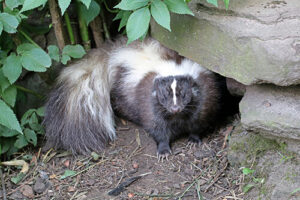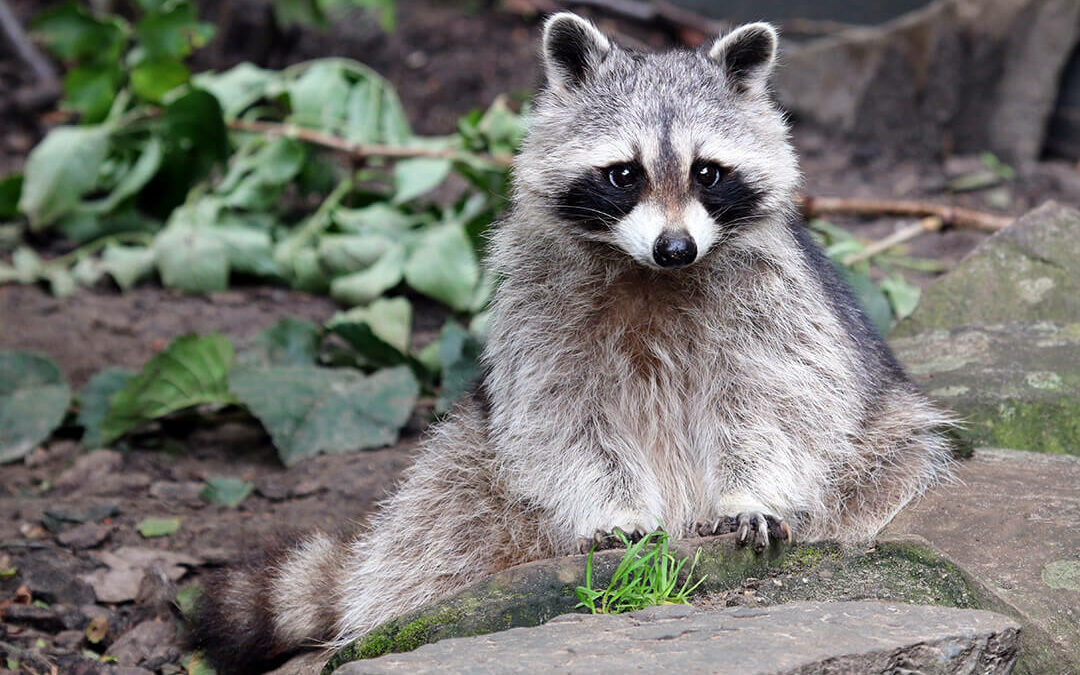Last month, we shared tips for attracting wildlife to your backyard. Well, we recognize that not all wildlife is welcome on your property. So, this month we’re sharing tips for keeping unwanted wildlife away.
 Keeping rodent pests like raccoons and skunks out of your backyard can sometimes be a difficult task, but with the right landscaping strategies you can discourage them from visiting. Strategies include lawn maintenance, careful selection of plants, trees, and shrubs, and adding hardscaping to block or discourage entry into your outdoor space. Read on for more details.
Keeping rodent pests like raccoons and skunks out of your backyard can sometimes be a difficult task, but with the right landscaping strategies you can discourage them from visiting. Strategies include lawn maintenance, careful selection of plants, trees, and shrubs, and adding hardscaping to block or discourage entry into your outdoor space. Read on for more details.
Lawn Maintenance
Keeping your lawn mowed to two to three inches high and free of debris, such as leaves, sticks, or logs, can help discourage pesky critters from making their homes in it. Additionally, leaving a perimeter of uncut grass around the edges of your property can act as a barrier to keep them away from the rest of your yard.
Lawn Health
 An unhealthy lawn’s root system is a breeding ground for weeds that unwelcome pests may feed on. And your lawn’s poor health may be an indication of an excess number of parasites (like grubs) that skunks and raccoons also find delectable. If your lawn has seen better days, don’t despair. Foundational lawn care practices like aeration, fertilization, and top dressing can help restore your lawn’s vitality. One or more applications of nematodes can help get grub populations under control again, as well.
An unhealthy lawn’s root system is a breeding ground for weeds that unwelcome pests may feed on. And your lawn’s poor health may be an indication of an excess number of parasites (like grubs) that skunks and raccoons also find delectable. If your lawn has seen better days, don’t despair. Foundational lawn care practices like aeration, fertilization, and top dressing can help restore your lawn’s vitality. One or more applications of nematodes can help get grub populations under control again, as well.
Plant Selection and Placement
Choosing plants that are not appealing to unwanted wildlife is key when trying to keep them out of your backyard. Thorny shrubs and prickly evergreens like Scotch Pine make great deterrents since animals can’t generally navigate through them easily. Additionally, you should avoid placing wood piles or compost heaps near the edge of your property as they often attract rodents.
Hardscaping
Installing hardscaping features like garden fences and retaining walls can help keep pests away due to their height and lack of access points for small critters. If you don’t want to install a fence or wall, landscape fabric may be an option. When laid beneath a layer of mulch it provides a strong physical barrier that prevents most pests from digging into your yard.
Food Sources
 Reduce or eliminate food sources that may be attracting unwanted wildlife to your property. This includes pet food dishes, bird feeders, fruit bearing trees and shrubs, and unsecured garbage cans. Rabbits and mice like to feed on the bark of younger shrubs and trees. To prevent this, install a guard or fabric around the trunks of younger shrubs/trees during the winter months to prevent this from happening.
Reduce or eliminate food sources that may be attracting unwanted wildlife to your property. This includes pet food dishes, bird feeders, fruit bearing trees and shrubs, and unsecured garbage cans. Rabbits and mice like to feed on the bark of younger shrubs and trees. To prevent this, install a guard or fabric around the trunks of younger shrubs/trees during the winter months to prevent this from happening.
Barriers
Installing a chicken wire type barrier around the perimeter of your property or gardens between the bottom of your fence and the soil/lawn and digging it in a few inches into the ground will deter or prevent smaller animals from entering your gardens.
Compromise
Even with the best efforts, unwanted animals will sometimes still be able to enter your gardens or lawn areas. Since your gardens/lawn are their main food source, you might have to share some of your plants with these creatures. A garden or plants do not always have to look perfect if you lose a plant or two during the winter months, replace it with something that may be more of a deterrent or protect it during the winter months.
Additional Tip
If you notice there is a particular plant that is attracting pests, try to replace it with something else that won’t be as enticing. This will help reduce the number of rodents on your property and make your outdoor space less appealing to unwanted guests overall.
Although some of our readers are very capable DIYers, we recognize that others may need assistance with the implementation of the above pest-thwarting strategies. If you fit into the latter category, don’t hesitate to contact us for professional landscaping advice and assistance!

